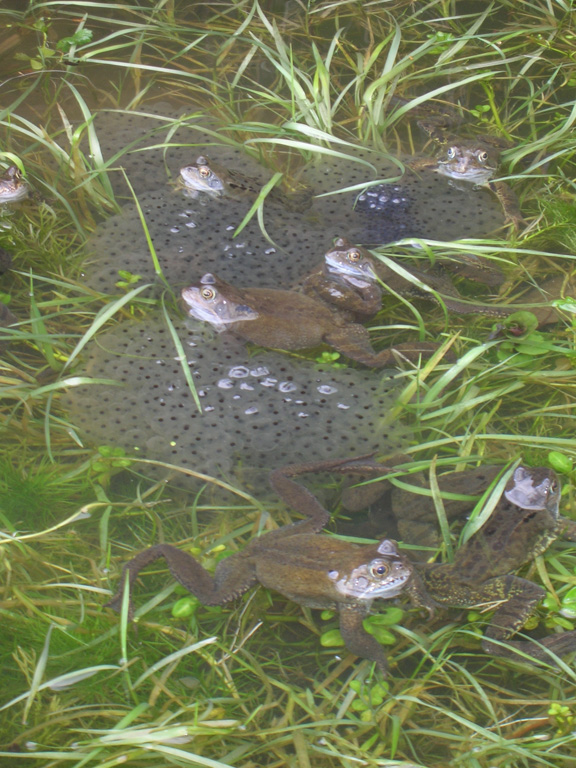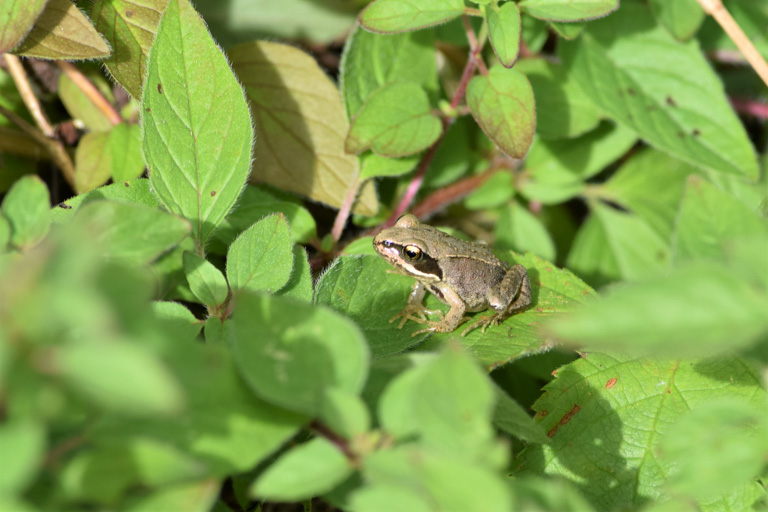- As temperatures climb, ranaviruses cause more frog deaths over a longer part of the year, according to a new study.
- The researchers combined data from outbreaks of disease caused by ranaviruses in common frogs (Rana temporaria) with laboratory investigations.
- They say that shaded areas and deeper ponds could provide refuges for afflicted animals that might slow the spread of the virus, but they also caution that this “short-term solution” is only a stopgap as the warming climate continues to make life difficult for amphibians.
Warmer temperatures are fanning the spread of a deadly disease in frogs, a new study has found.
Teasing apart the complex dynamics of the effects of climate change on how quickly disease ripples through a population and the toll it takes has proven difficult. But now, a team of researchers led by Stephen Price, a molecular biologist at the Zoological Society of London, has shown that, as temperatures climb, ranaviruses cause more frog deaths over a longer part of the year, publishing their work May 10 in the journal Global Change Biology. To demonstrate that link, they combined data from outbreaks in wild common frogs (Rana temporaria) in the U.K. and laboratory investigations.
“A number of scientists have already alluded to the fact that climate change could increase the spread of disease, but this is one of the first studies that provides strong evidence of the impact of climate change on wildlife disease,” Price, also a professor of developmental neurobiology at University College London, said in a statement.

The team looked at more than 25 years of records compiled by citizen scientists for the Frog Mortality Project. When temperatures spiked, so did the occurrence of the ranavirus-caused disease, which leads to ulcers, bleeding and death. They found that for every 1-degree-Celsius (1.8-degree-Fahrenheit) rise in temperature, the proportion of frogs in a population that died rose by more than 3 percent.
The pattern of outbreaks also closely tracked historical climate shifts: Infections surged during a spate of warming in the 1990s and then tapered off as conditions cooled from the early 2000s through 2010. The scientists predict that ranavirus outbreaks, which typically occur in the Northern Hemisphere’s summer, could become more common as early as April and as late as October in the U.K., according to the scenarios for carbon emissions’ effects on temperatures mapped out by the U.N.’s Intergovernmental Panel on Climate Change.
Springtime epidemics could impact not just adults, but also the larval tadpoles that represent the future of the species, the authors write. What’s more, it’s likely that the range of ranaviruses will expand throughout the country.

“Climate change isn’t something that’s just happening in faraway places,” Price said. “[I]t’s something real and present that’s already had hard-to-predict impacts on wildlife in our own back gardens here in the U.K.”
He and his colleagues also examined ranavirus infection in common frogs in the laboratory, as well as in cell cultures, and they found that higher temperatures increased the virus’s propensity to spread, take hold in a population, and kill more frogs.
The researchers caution that other ectothermic animals, like reptiles and fish, which rely on the environment to regulate their temperature, could also be susceptible to ranaviruses energized by warmer weather, threatening entire ecosystems.

The team said that shaded areas and deep ponds could provide refuges for afflicted animals that might slow the spread of the virus. But that’s only a “short-term solution,” Trenton Garner, a co-author of the study and a professor of zoology with the Zoological Society of London, said in the statement.
“[I]f we don’t eventually slow and reverse human-driven climate change,” Garner said, “we unfortunately can only expect things to get worse for our amphibians.”
Banner image of a common frog © Londonderry Desmond Loughery.
Citation
Price, S., Leung, W., Owen, C., Puschendorf, R., Sergeant, C., Cunningham, A., … & Nichols, R. (2019). Effects of historic and projected climate change on the range and impacts of an emerging wildlife disease. Global Change Biology. doi:10.1111/gcb.14651
FEEDBACK: Use this form to send a message to the author of this post. If you want to post a public comment, you can do that at the bottom of the page.














